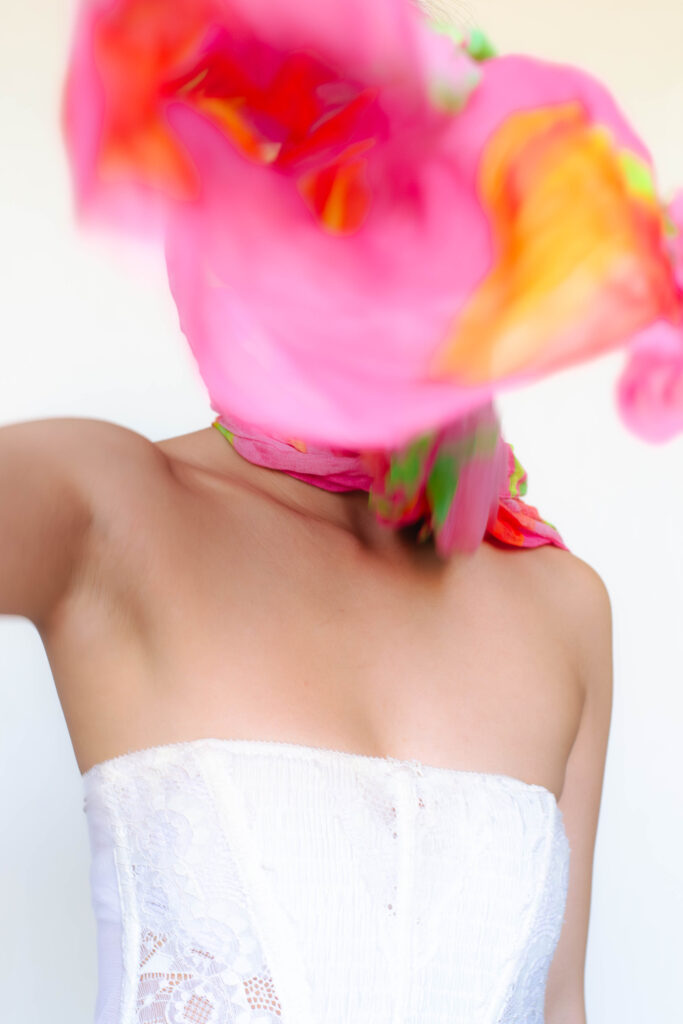
As you scroll through social media, a whirlwind of fashion aesthetics bombards your screen. One moment, it’s all about the “Clean Girl Aesthetic”; the next, someone’s hyping up the emerging “Mob Wife” look. If you Google “Fashion Aesthetics of 2024”, you’re hit with articles offering up to 33 different fashion aesthetics to explore– old money, dark academia, coquette, coastal grandmother, tomato girl? It’s a mix of kind of making sense but also leaving you scratching your head. So what are fashion aesthetics and how did we end up in this fragmented fashion world?
Fashion’s Impact on Collective Identity
Fashion matters beyond just clothes; it intricately ties to our personal identity and expression. Throughout history, it’s been a symbol of our place in society and a means of connecting with our communities. For the better part of the 20th century, fashion trends trickled down from fashion houses, graced the pages of magazines, or inspired by celebrity culture before finding their way into our wardrobes.
These trends reflect belonging to a mainstream culture and adhering to its status quo. Following fashion trends and being part of mainstream media not only dictate one’s outward appearance but also play a significant role in shaping individual identities and values. A shared experience among peers is created by participating in these trends, strengthening bonds, and reinforcing a collective sense of identity within a larger community.
Subculture Fashion Empowers Community
But if you don’t fit into the mainstream, subcultures provide a place to come together and express different values and identities, challenging the norm through clothing. Take the 1970s, for example: Punk culture flaunted leather jackets, ripped clothes, and unconventional hairstyles to express their rebellion against mainstream, corporate culture. The punk look wasn’t just a fashion statement; it united individuals towards the punk ideology, where nonconformity and rebellion were celebrated.
Similarly in the 70s, hip-hop, deeply rooted in African American, Afro-Caribbean, and Latino inner-city communities, emerged as a cultural force influenced by hip-hop music. Through its signature style of baggy jeans, oversized tees, and chain necklaces, hip-hop fashion served as more than just clothing; it acted as a unifying force, bringing individuals together. In the face of economic challenges, racial discrimination, and limited opportunities, hip-hop culture offered a sense of belonging and community, shaping identities and fostering resilience within marginalized communities.
The Evolution Into Fashion Aesthetics
The rise of the internet eliminated the need for youth culture and interconnected, localized gatherings as our social interactions increasingly migrate online. The COVID-19 pandemic accelerated this transition by forcing us to isolate ourselves from our traditional social circles, resulting in a surge of overall loneliness. Rather than forming real-life connections, we turned to our phones and built a reliance on online communities. Driven by hyper-personalized algorithms, the internet landscape broke into tiny fragments, paving the way for fashion aesthetics.
Thanks to the internet and TikTok, a wealth of historical fashion knowledge is now accessible at our fingertips. The fashion industry, once largely controlled by elite gatekeepers and professionals, is now an inclusive scene, welcoming anyone with an internet connection to participate. With the ability to draw inspiration from any period or culture, the internet is now a melting pot of diverse fashion aesthetics.
How Fashion Aesthetics Shape Identity
As a society, we place value on our consumer choices, and by purchasing certain types of clothing, you can mold into a certain kind of person. We have aestheticized our entire lives, transforming fashion style into complete personalities and lifestyles. Now, when we wear a particular trendy clothing piece, it encapsulates fashion sense, personality, and lifestyle into a singular identity.
Take the Clean Girl Aesthetic, for instance: minimalist clothing, neutral colors, gold jewelry, simple hairstyles, and fresh-faced makeup are all stylistic components to signify this fashion aesthetic. But it’s more than just a look; it’s a representation of a softer, healthier, and more reflective personality, associated with lifestyle practices like healthy eating, yoga or pilates, and journaling. Fashion aesthetics allow individuals to express themselves through their look while also fostering a sense of community.
However, with the erosion of traditional community infrastructures, people are increasingly purchasing their identities to find a sense of belonging and community. These trendy fashion aesthetics have become our new tribes, where people are buying new identities to feel like a part of something larger.
Identity Without Substance
Content Creator, Mina Lee (BTW-her Youtube video “Let’s talk about the rise of ‘-core’ and ‘girl’ aesthetics” was a huge inspiration for this article so go and check it out!) dives into this concept in a Tik Tok explaining, “This is very much a symptom of like late-stage capitalism where so many of our activities revolve around spending money, like the lack of third places… a lot of people don’t have hobbies or interests anymore expensive so instead they invest in a style aesthetic.”
Lee goes on to say that people will shop for a fashion aesthetic that embodies the lifestyle they hope to achieve, rather than partaking in the lifestyle. For example, you embody the ‘ballet-core’ aesthetic with ballet flats, tulle skirts, tights, and bows but have not actually danced or planned to take any ballet classes. “They’re using fashion and style as a sort of Band-Aid for things that they are lacking in their life”, she explains.
The Problem with Fashion Aesthetics
Fashion Aesthetics Hinder Self-Discovery
The fundamental distinction between subculture fashion uniforms and current fashion aesthetics lies in their origins. Subculture fashion emerged from communities bound by shared values and interests, with real-life experiences serving as magnets to find like-minded individuals. Fashion aesthetics, based on intangible vibes, offer a false sense of connection with online communities, often leaving us feeling disconnected in real life.
While we may believe that these fashion aesthetics help us understand ourselves better, the consolidation of style, personality, and lifestyle into one actually obstructs a genuine understanding of our identities. Tik Toker, Gia who goes by the username @attemptedsoc says in a video, “People take it to such a drastic extent that it’s as if they fetishize themselves as this character to the point they start subconsciously molding themselves into this persona, even if it clashes with what they really want”.
As complex humans who experience real-life events and emotions, these hyper-specific TikTok fashion aesthetics can confine us into rigid boxes and stifle our true selves. Gia goes on to question, “How are we supposed to forge a real sense of self when all the content we consume every single day intentionally leads us back to the same conclusion? These labels we place upon ourselves are no longer based on real experience and instead based on the content we consume.”
The Commodification of Identity and Community
Aesthetics have become a marketing buzzword, aimed at fabricating attention and driving revenue rather than fostering genuine communities. Each new fashion aesthetic brings a new shopping list of clothes, makeup, and decor, promising to transform our appearance and demeanor.
Typically, there’s a risk of losing personal style when there is a focus on trend-driven wardrobes. But when our entire identity is wrapped up into one consumer package, these fashion aesthetic trends leave us feeling empty and unsatisfied, perpetuating a capitalistic cycle of finding the next aesthetic to buy. Without a true identity, we find ourselves cycling through clothes at a mindless, unprecedented rate, purchasing items that don’t resonate with who we are.
To conclude, Rebecca Jennings, in a Vox article states, “Virality treats humans like fast fashion: algorithmically generated products to shove onto all of our screens at the same time, on which we then spend enormous sums of money and attention before ending up in the literal and/or figurative landfill.”
–
The rise of fashion aesthetics in the digital age reflects a great shift in how we construct and express our identities. While these fashion aesthetics offer a means of self-expression and connection in an increasingly fragmented world, they also pose challenges to our understanding of authenticity and community. As we navigate a landscape where trends cycle rapidly and identities are packages for consumption, it’s crucial to maintain a sense of self-awareness and discernment.
Ultimately, fashion should serve as a tool for empowerment and self-expression, rather than a means of conforming to trends and superficial ideals. By embracing our uniqueness and fostering genuine connections, we can reclaim fashion as a vehicle for personal growth and collective understanding in the ever-evolving digital age.
